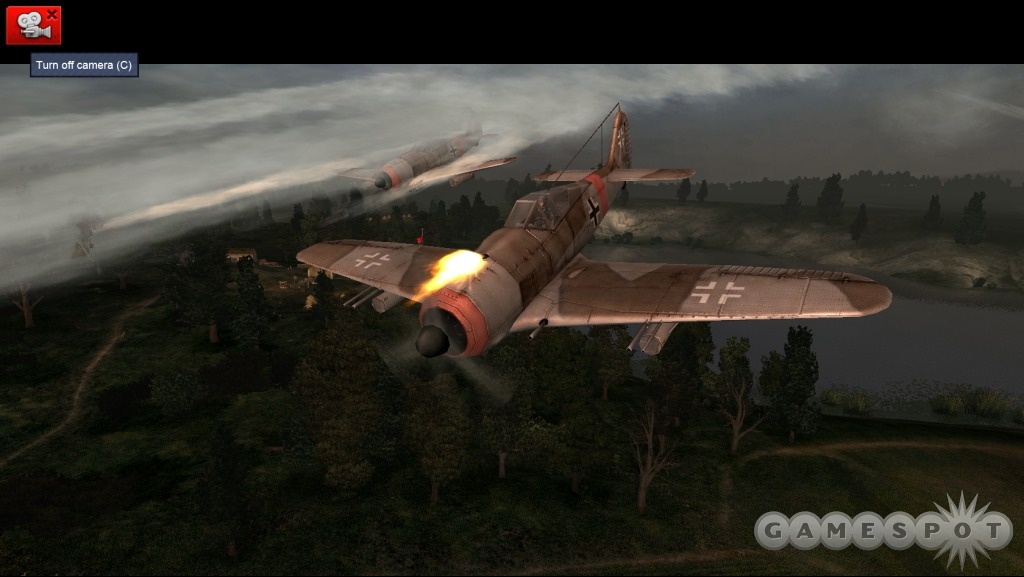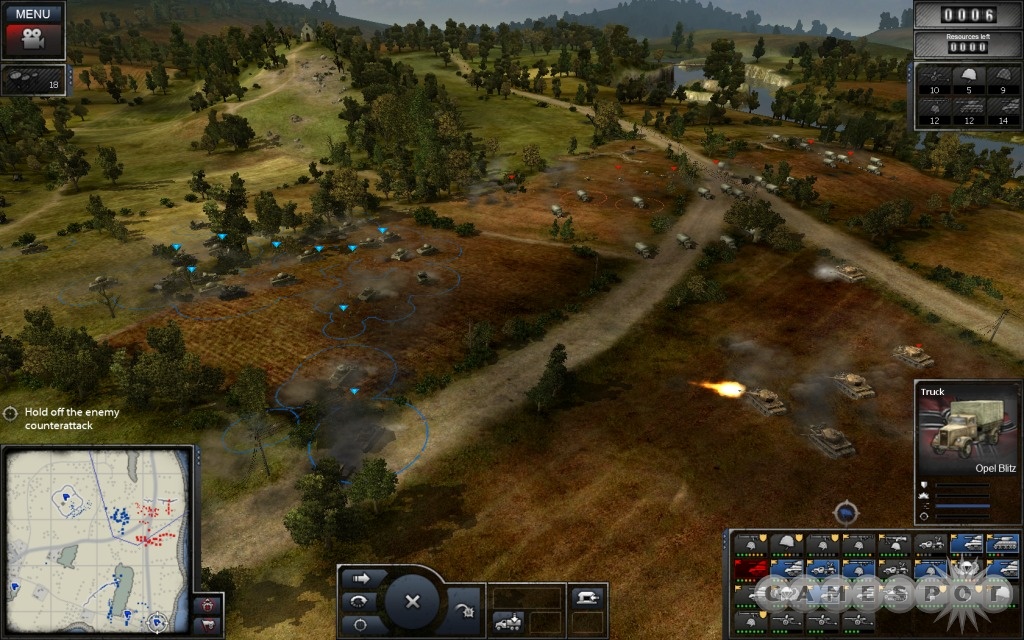Order of War is a World War II real-time strategy game distinguished by its accessibility and simplicity. It's easy to learn and easy to play, eschewing base building, unit-level micromanagement, and deep economics, but it's never boring and it offers ample challenge. Although some players may miss controlling unit special abilities during each engagement, your soldiers' greater autonomy gives you the opportunity to take advantage of the cinematic camera mode, which provides a dramatic depiction of the battle as it unfolds. Order of War doesn't try to reinvent the World War II RTS or introduce anything new to this well-trodden genre, but it does excel at most of what it attempts, providing a fun and satisfying experience for veterans and newbies alike.

One important reason for Order of War's simplicity is its scope. You take on the role of a colonel and control units representing whole companies, rather than squads or individuals. As a result, it's not your responsibility to ask infantry squads to lob hand grenades at the enemy; they can do such tasks on their own. Instead, your focus is on big-picture tactics such as harnessing terrain, positioning, managing reinforcements, and calling in air support. For instance, antitank guns placed on a hill can devastate enemy armor before it closes to attack range, and swamps create natural choke points since they're only passable by infantry. The same can be said of thick forests--that is, until you flatten them with artillery. On any terrain, outmaneuvering your opponents, specifically flanking vehicles, is vitally important both to avoid their fire and to take advantage of their weaker side and rear armor. Since there is no fog of war to shield your approach from the enemy, you'll need to use multiple vectors of attack, including artillery strikes and feints, to force your opponent into a weak position. Additional ground forces and air support, such as bombing runs and paratrooper drops, can be purchased from off-map with resources collected from control points, which provide a steady but finite supply of income. Balancing your expenditures, as well as timing air support correctly, is another important consideration in Order of War.
Two other factors that make Order of War easy to enjoy are its intuitive control scheme and uncluttered interface. The precise camera controls and wide zoom distance provide a good and thorough view of the battlefield, although an even wider zoom for watching multiple fronts at once would be even better. As a rule, Order of War uses standard RTS controls for movement and attack, and every move order also works as an attack-move, which is a handy default. Manually, you can execute a move-only order to speed your units past the enemy's front line to the high-priority targets, and each time you give any move order, outlines will depict how your units can position themselves at the rally point, which allows you to set their final facing and formation. In addition to helping you position your units, the interface displays a clear attack range for each unit--friend or foe--as you hover the cursor over it, so you'll have only yourself to blame if you send your men into the firing arc of enemy rocket artillery. The rest of the interface is extremely unobtrusive, leaving plenty of space for the action.
Order of War can be quite attractive, especially in cinematic camera mode, which switches among dramatic shots of your troops in action and showcases unit models and animations that you might not otherwise appreciate. Even when the cinematic camera is off, Order of War looks nice, with striking skylines and realistically diverse terrain. On the whole, the sound is excellent, from the solid in-game voice acting to the authentic sound effects, including exchanges of small-arms fire, rumbling diesel engines, and thunderous artillery barrages. However, the incessantly repetitive musical score pollutes the soundscape and tends to stick in your head long after you've left the game. While not a game breaker, the lack of any additional music is a definite flaw.
While Order of War is remarkably easy to play, its two campaigns, each nine missions in length, can be difficult. Whether your mission is to ambush a convoy with paratroopers, destroy a massive German railway gun, or hold out against overwhelming numbers of Russians, you'll be put to the test. While most missions involve seizing all control points from the enemy, there are enough special objectives and other variations to keep the missions interesting. As you progress through each campaign, you earn experience points that you can spend toward persistent bonuses, like better tank armor or firing range. In one campaign, you lead the Americans on yet another romp through occupied France, in which preventing a German breakout from the Falaise Pocket and storming the fortifications of the West Wall are the most memorable missions. While the American missions are challenging enough to counteract any feelings of deja vu, the German campaign is more fun, thanks to awesome units, such as the King Tiger tank and the railway gun, and a two-front war, featuring epic battles against the Soviets. Unfortunately, this otherwise outstanding campaign is marred by two bugs: the mission where you defend the West Wall against the Americans often crashes to desktop, and in another mission, the victory trigger rarely fires properly. One disappointing omission from Order of War's single-player game is a Soviet campaign, instead the Soviets are represented both in multiplayer and as adversaries in the German campaign.

Multiplayer in Order of War doesn't break any new ground, but it's great for a quick blitzkrieg on your lunch break. MP is limited to six maps, each with two- and four-player variants, and there is only one game type, in which you must capture all the control points to win. However, the maps are well designed, with diverse terrain and natural choke points, so you do get quality if not quantity. Matches tend to be fast paced, with a one-vs.-one matchup typically resolved in under 30 minutes, partially owing to the fact that turtling is not an option, since you can't build any sort of static defenses or hide any weaknesses under a fog of war.
Overall, Order of War is a fun game that's far more engrossing than the sum of its simple parts suggests. Although it doesn't show any ambition to innovate the WWII RTS genre, Order of War roundly succeeds in delivering all the thrills, drama, and grandeur you'd expect. While some players will sorely miss details like battlefield scavenging and squad micromanagement, most will be having too much fun to care. So, if you are itching for an epic tank battle or just need a simple RTS game to bait your friends into the genre, Order of War is worth your attention.